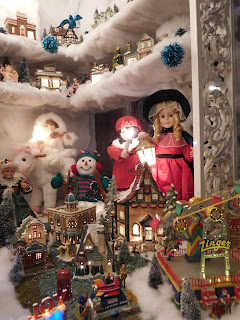In a post I wrote three years ago, I relayed one of the most striking insights Susan B. Anthony offered:
"Let me tell you what I think of bicycling. It has done more to emancipate women than anything else in the world. It gives women a feeling of freedom and self-reliance."
Yesterday, I came across this:
"Advertisements, magazines and posters promoted the image of the New Woman, just as other forms of mass media would later exhibit images of the flapper, the housewife, the wartime worker, and the androgynous feminist. The bicycle was the symbol of the New Woman's freedom outside the home, as she raced off with her friends--men or women--down city streets and into the countryside."
Obviously, that didn't come from Ms. Anthony. It did, however, come from a source that's intersting, if not as much so as, and for different reasons from, the godmother of feminism as we know it.
The second quote is the only mention of the bicycle in The Social Sex: A History of Female Friendships, by Marilyn Yalom with Theresa Donovan Brown. Dr. Yalom is a former Professor of French and senior scholar at the Clayman Institute of Gender Research at Stanford University. Ms. Donovan Brown is a former speechwriter and ran a financial communications firm.
I strongly suspect that Dr. Yalom supplied most of the information and Ms. Donovan Brown did most of the writing. After all, the section on women's friendships and the salons of 17th Century France contains ideas and insights that only someone who read the sources in the original could have gleaned. And the prose flows freely--like, well, a good speech.
Therein lies both the book's strengths and flaws. While Donovan Brown's prose flows freely, it often lacks depth. While Yalom's research provides the reader with glimpses into the nature of the relationships described in the book, and shines a light onto documents that might otherwise have been lost, those documents (letters, stories, essays and novels) come almost entirely from women (and, in a few cases, men) from, or with connections to, the upper classes. That, perhaps, is not Dr. Yalom's fault, as most women who weren't part of those classes were illiterate until the 19th Century and rarely went to college before World War II.
Still, the book is an engaging and, at times, interesting read. It won't turn you into a scholar or an expert, but it's a good starting point for anyone who wants to read more about relationships or women's history. Finally, there is something to be said for any piece of writing that reminds readers of the importance of the bicycle in changing women's lives, however brief and fleeting that reminder might be.
"Let me tell you what I think of bicycling. It has done more to emancipate women than anything else in the world. It gives women a feeling of freedom and self-reliance."
Yesterday, I came across this:
"Advertisements, magazines and posters promoted the image of the New Woman, just as other forms of mass media would later exhibit images of the flapper, the housewife, the wartime worker, and the androgynous feminist. The bicycle was the symbol of the New Woman's freedom outside the home, as she raced off with her friends--men or women--down city streets and into the countryside."
Obviously, that didn't come from Ms. Anthony. It did, however, come from a source that's intersting, if not as much so as, and for different reasons from, the godmother of feminism as we know it.
The second quote is the only mention of the bicycle in The Social Sex: A History of Female Friendships, by Marilyn Yalom with Theresa Donovan Brown. Dr. Yalom is a former Professor of French and senior scholar at the Clayman Institute of Gender Research at Stanford University. Ms. Donovan Brown is a former speechwriter and ran a financial communications firm.
I strongly suspect that Dr. Yalom supplied most of the information and Ms. Donovan Brown did most of the writing. After all, the section on women's friendships and the salons of 17th Century France contains ideas and insights that only someone who read the sources in the original could have gleaned. And the prose flows freely--like, well, a good speech.
Therein lies both the book's strengths and flaws. While Donovan Brown's prose flows freely, it often lacks depth. While Yalom's research provides the reader with glimpses into the nature of the relationships described in the book, and shines a light onto documents that might otherwise have been lost, those documents (letters, stories, essays and novels) come almost entirely from women (and, in a few cases, men) from, or with connections to, the upper classes. That, perhaps, is not Dr. Yalom's fault, as most women who weren't part of those classes were illiterate until the 19th Century and rarely went to college before World War II.
Still, the book is an engaging and, at times, interesting read. It won't turn you into a scholar or an expert, but it's a good starting point for anyone who wants to read more about relationships or women's history. Finally, there is something to be said for any piece of writing that reminds readers of the importance of the bicycle in changing women's lives, however brief and fleeting that reminder might be.

















